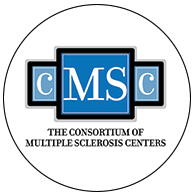Possible side effects for multiple sclerosis (MS) medications can range from mild to life-threatening.
When managing MS, health care providers are tasked with balancing the risks and benefits of every type of MS drug for each patient. Most of these medications require regular blood tests to track how the drug is affecting the patient’s body, particularly the liver.
Managing potential side effects of MS drugs is another important component as it can help promote patient adherence to therapy. Pharmacists can support this effort by educating patients on what they can expect.
Here are a few of those potential side effects:
1. Flu-Like Symptoms
Patients who self-administer interferon beta injections commonly experience flu-like symptoms like muscle and joint pain, chills, and fever. These symptoms typically persist for just a day or 2 after the injection, but patients can take the following steps to manage them:
- Stay hydrated
- Eat healthfully
- Administer the medication before sleep
- Warm the injectable to body temperature prior to administering
2. Changes in Heart Rate
Fingolimod (Gilenya) has been shown to slow heart rate, so health care providers may want administer the first dose in a clinical setting where the patient can be monitored.
If patients are taking antiarrhythmic agents or have a history of congestive heart failure, ischemic cardiac disease, or any other heart condition, they may need an electrocardiogram prior to starting therapy.
3. Chest Pain
Some patients have reported experiencing chest pain after taking glatiramer acetate (Copaxone).
The exact mechanism behind this reaction is not entirely understood, but pharmacists and prescribers should make sure that the patient isn’t frightened enough by the pain to discontinue the drug.
4. Rare Brain Infection
Some MS drugs are associated with an increased risk for a rare yet potentially life-threatening brain infection.
In August 2015, the FDA issued a warning for health care professionals about progressive multifocal leukoencephalopathy (PML), which was reportedly seen in 2 multiple sclerosis patients taking fingolimod (Gilenya).
PML is caused by the John Cunningham virus and can occur in some patients who have compromised immune systems, including those taking immunosuppressant drugs.
5. Chemotherapy-Like Side Effects
Mitoxantrone is a chemotherapeutic agent that is used to treat MS and given to MS patients intravenously at 3-month intervals.
Side effects associated with this treatment are similar to those observed with many of the other chemotherapeutic agents, such as hair loss, bladder infection, and nausea. In rare instances, mitoxantrone has been linked to leukemia occurrence.
Allison Gilchrist, Associate Editor












